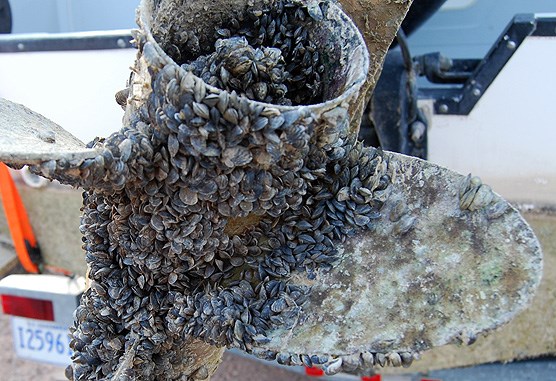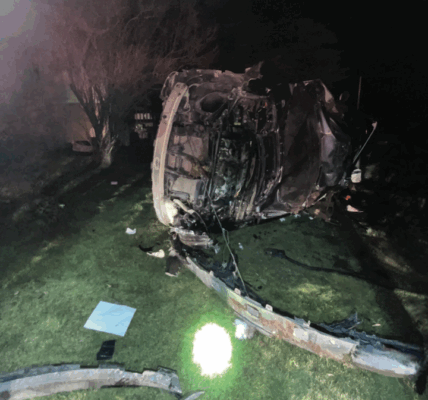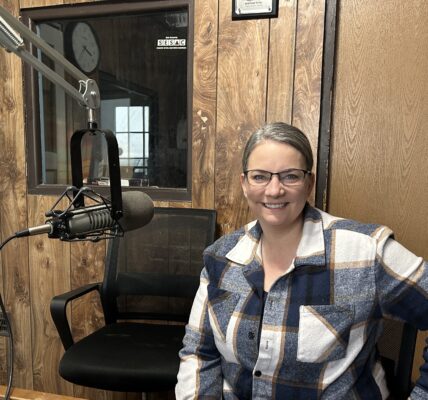Yellowstone National Park reminds boaters, anglers to clean, drain and dry

The following is a release from the National Park Service. –
MAMMOTH HOT SPRINGS, WY – Yellowstone National Park announces boating and fishing season will begin Saturday, May 28, and emphasizes clean, drain and dry to prevent the spread of aquatic invasive species (AIS) and protect park waters. The season will close Oct. 31.
Boaters and anglers must clean, drain and dry all boats and equipment prior to arriving in the park to minimize the risk of introducing AIS into Yellowstone’s waters. Watercraft equipped with sealed internal ballast tanks are banned from all park waters as inspections cannot always detect aquatic invaders in these types of boats. In addition, felt-soled footwear is banned because they can carry microscopic disease organisms even after cleaning.
Clean, Drain, Dry
Boaters and anglers: ensure you do not bring AIS to the park.
Clean all plants, animals, mud, sand and other debris from your boat, anchor, boots and equipment. Use high-pressure, hot (120-140F) water if possible.
Drain all water from your boat, including the motor, bilge, livewell and other compartments before you arrive. Leave drain plugs out during transport. Do not move water or organisms from one water body into another.
Dry all compartments and equipment in the sun for five days.
Clean, drain and dry requirements are critical steps to protect the park’s and nation’s waterways.
AIS
AIS pose a grave and growing threat to the Greater Yellowstone Ecosystem and surrounding economies. AIS can quickly and drastically transform habitats and food webs, causing permanent declines in sport fish and food resources for native wildlife.
Recent AIS Threat
In February 2022, an angler caught an invasive predatory smallmouth bass at the confluence of the Gardner and Yellowstone rivers just north of the park’s boundary at Gardiner, Montana. Soon afterwards, biologists sampled the Gardner River upstream of where the smallmouth bass was caught and did not find evidence of this species within Yellowstone. However, since anglers are highly effective at suppressing invasive fish in waters where they coexist with native species like cutthroat trout, the regulations now require them to kill and report any smallmouth bass if caught within park waters.
Potential Future Threats
Dreissenid Mussels, including Zebra and Quagga Mussels, are among the world’s most harmful invasive species, with large and widespread ecological and economic effects. If Zebra or Quagga mussels are found in Yellowstone, park waters may close to all watercraft to prevent the spread to other waterways. People are encouraged to report violations and potential discoveries of AIS. The park will continue efforts to develop an AIS Management Plan and Rapid Response Framework in collaboration with the surrounding states.
Permits and inspections
Watercraft and angler float tubes must have a Yellowstone National Park permit and AIS inspection prior to launching in park waters. Permits and inspections are available for purchase 8 a.m. to 4:30 p.m. seven days per week during the summer season at the following locations:
Motorized and non-motorized watercraft (including angler float tubes)
- Bridge Bay Ranger Station
- Grant Village Backcountry Office
- Lewis Lake Ranger Station
Angler float tubes only
- West Yellowstone Visitor Information Center
- Bechler Ranger Station
- Mammoth Hot Springs Backcountry Office
- Northeast Entrance
Yellowstone fishing permits can be purchased at in-park stores, vendors in surrounding communities or online via Recreation.gov.
– www.nps.gov/yell –
About the National Park Service. More than 20,000 National Park Service employees care for America’s 423 national parks and work with communities across the nation to help preserve local history and create close-to-home recreational opportunities. Learn more at www.nps.gov and on Facebook, Instagram, Twitte
Let us know what you think!
+1
+1
+1
+1
+1
+1




